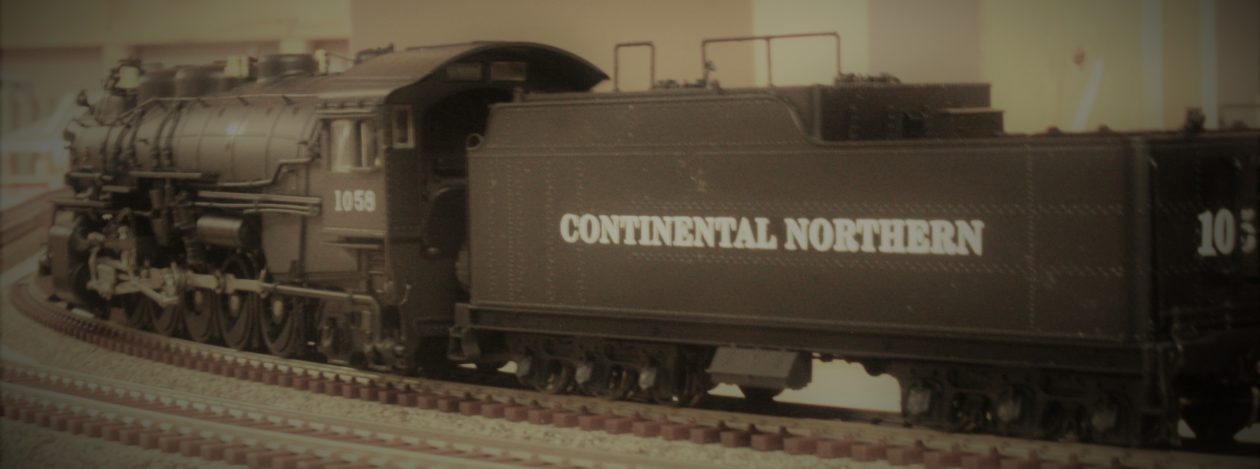As you may (or may not) remember that the reason I model a freelance railroad is an off hand comment made to me by an experienced model railroader friend of my fathers. He was over once visiting my father and stopped down in the basement while I was running trains on my older brothers layout. My transgression was (as far as I know) running an engine from one road with the caboose from another. He told me I was doing it wrong and that wasn’t the way a real railroad would do it. No offense, but I was 6 at the time of this heinous crime. That comment always stuck with me.
When I was about 11 or 12 I became a more serious modeler complete with a subscription to Model Railroad Craftsman.
It opened my eyes to all the hobby had to offer. And yes it showed me that railroad A would not run a caboose from railroad B. I also became aware from the letters pages that there were a lot of people who were ready to point out that someone had not done something prototypical. That old comment came back to haunt me and I was afraid to do something wrong.
I also became aware of the “Freelance Railroad”. One that had their own way of doing things, but within the context of what was prototypical for that region. The most famous was the Allen McClelland’s Virginian and Ohio. It’s still talked about like it was an actual railroad. My favorite though is Frank Ellison’s O scale Delta Lines. Frank would remove the pilot trucks from steam engines because they caused derailments. Though a well detailed and scenic layout, operations were more important than scale fidelity.
So I decided at 12 that was the way to go. Came up with a semi plausible name and a totally hideous paint scheme.
When I returned to the hobby I decided to stay with the freelance theme. I refined the name to the Grand Forks and Western Minnesota, DBA the Grand Western. From there I started work on a paint scheme. The early attempts sometimes bordered on circus like. I think I kept the local hobby shop in business just buying undecorated Athearn diesel shells. A big part of the problem was that they were too intricate for someone with no airbrush or masking skills. It was spray can and hand brushing.
I finely landed on a scheme, that looking at it now was very close to the Southern Pacific’s. It was a light gray body with a red cab, nose and rear end. The roof was painted black with the thought that it hid the diesel exhaust along the top. A basic utilitarian scheme and easy for the shops to keep up. And I could use a spray can for the gray and brush paint the rest.

A change of name and paint…
First of all you will note the change of name. I went from Grand Western to Continental Northern because for what ever reason people couldn’t understand the Grand Western name, but will go Oh, OK when they see Continental Northern. The black patch below the cab is where the GF&WM reporting marks were. The gray paint is no longer available so I removed the reporting marks and left the black patch.
But before we talk new engine paint we have to look at cabooses. I had painted one in the gray and red scheme to match the diesel scheme. It never struck me as very caboosy. (I know, not a word). The scheme I landed on was the basic red caboose.


When I started painting the modern steel cabooses I wanted something a little more modern and interesting looking. I remembered a paint scheme from a video a rented from the LHS from Model Railroader. It was on airbrushing, as my wife had gotten me a vey nice/expensive new airbrush. I found the process daunting with prepping the surface, mixing the paint with thinner and clear coating the finished car. Add to that the clean up with oil based paints and it was a lot. I held off airbrushing until acrylics came in to their own.
But I always remembered the finished caboose that Jim Hediger painted in that video. Bright red with yellow ends. With my airbrushing and masking skills greatly improved I decided to recreate that look for my road.


Side note, I have found a great resource for LED’s. It is Lighthouse LEDS. I found them while gathering supplies for a different project. They have prewired flashing red LEDs. I plan to equip the cabooses with rear red flashing lights powered from the rails.
So when it came time for the diesels I figured I would just carry that scheme forward to them.
And this is the look…

The Continental Northern refers to it as their “High visibility Safety scheme”. The diesel itself is a Athearn BB that I have been converting to DCC/sound (for like the last 10 years) and is the subject of an upcoming post. I had the shell ready for paint and it became the test bed for the new scheme.
More found stuff…
The reason this became something of a priority was that as I was digging through the shelves looking for cars that needed to be put together, I came across two Broadway Limited Import SD 40-2s and a Bachmann GE 8-40c that were undecorated. The BLI engines are DCC/sound and the Bachmann will need to be converted.
So loving the new look I went ahead and started the BLI engines, held off on the Bachmann as I need to check out decoders for it.




And that’s where I am with them at this point. They just need decals and then final assembly. After that it’s off to the programming track and then the layout. Will keep you updated.
Till next time, stay safe and happy modeling…





















































































